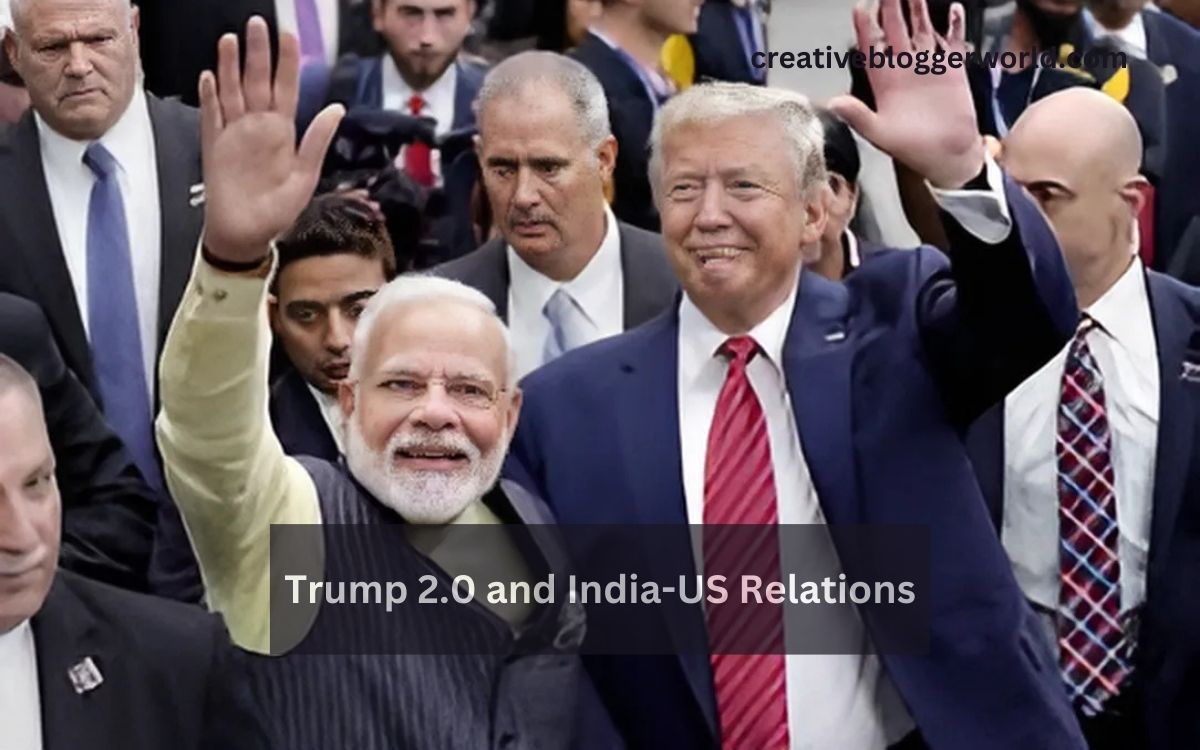Trump 2.0 Impact on India-US Relations

The 2024 United States presidential election has spurred deliberations on the likely geopolitical consequences of Donald Trump’s second term (Trump 2.0), particularly through regard to India-US ties. Trump’s foreign policy, trade, and defense creativities have had a significant impact on India-US relations since his primary term. As the 2024 elections approach, everyone is excited to see if Trump’s comeback will change the nature of the relationship amid these two strong countries.
Trump 2.0: What will be the impact on India-US relations?
Effects on the economy and trade
India has emerged as a noticeable player in the world economy, and trade connections amid the United States and India have developed meaningfully in recent years. During his primary term, Trump implemented a diversity of trade initiatives, from strategic economic accords to the implementation of tariffs. Efforts to equalize the trade gap amid the two nations were prompted by Trump’s “America First” program. The over-all trajectory of trade remained strong, notwithstanding certain problems India has faced with these procedures, such as higher taxes on Indian imports.
Trump might keep concentrating on changing the global supply chain to support American businesses if he is elected president again. Trump’s protectionist policies may have an impact on India’s place in international trade. Any ongoing discussion will probably center on trade discussions, particularly in areas like technology and military.
Partnerships for Defense and Strategy
The last ten years have seen a major rise in defense cooperation between the US and India, particularly in the regions of arms sales, defense agreements, and joint military exercises. Because of its beneficial Indo-Pacific location, India is a significant ally of the United States in its efforts to offset China’s increasing regional dominance.
In specific, the signing of significant defense agreements like the Logistics Exchange Memorandum of Agreement and the Communications Compatibility and Security Agreement supported this strategic alliance during Trump’s primary term. More defense cooperation is now likely because of these agreements.
The Indo-Pacific region would continue to be a top priority during Trump’s second term, and India’s position would only grow more crucial. Increased defense cooperation with India may result from Trump’s strategy of reinforcing military relations and opposing China. Trump’s unpredictable foreign policy may cause sporadic conflicts, but India’s support for American interests in Asia would probably result in ongoing military and strategic cooperation.
Climate Change and International Projects
A significant departure from multilateral climate agreements, particularly the Paris Climate Agreement, occurred during Trump’s first term. In order to address environmental issues, India, which is greatly affected by climate change, has collaborated closely with the US and other countries.
Trump’s opposition to climate change may not alter in a second term because his administration has always supported deregulation and a more climate-skeptical stance. India has been outspoken about its need for climate finance and assistance for its renewable energy targets, so this could cause friction with the country. However, Trump’s policies may be in line with both countries’ economic objectives in the renewable energy industry, which is one area where India’s rising green energy ambitions may spur cooperation.
Geopolitical Factors and China’s Development
With tariffs, trade disputes, and military posture, the Trump administration was notorious for taking a tough line against China. Concerned about China’s increasing influence in Asia and having its own territorial problems with China, India embraced this strategy. India has long considered China to be a strategic rival, and Trump’s tough stance against Beijing gave India a chance to fortify its regional standing.
In the event of a Trump 2.0 presidency, thwarting China’s rise will perhaps remain a top priority, proceeding the Quadrilateral Security Dialogue involving the United States, Japan, Australia, and India. In this favor, Trump’s distant policy agenda—, which give emphasis to diplomatic, defense, and economic methods to counterbalance China’s expanding, power—may call for an even stronger alliance through India.
H-1B Visa Holders and Immigration Rules
Trump’s first-term immigration policy was contentious, mostly with respect to the H-1B visa package, which is lengthily used by Indian experts in the US. The immigration restrictions and stricter visa regulations followed by his government had a major effect on Indian tech specialists.
Trump may maintain his tough immigration policies if he is elected to a second term. Indian nationals looking for work in the US may face difficulties as a result, especially in the tech and healthcare industries. The political climate in the United States and India’s reaction to modifications in visa regulations, however, may determine the long-term effects of these policies.
Conclusion: Under Trump 2.0, the Future of India-US Relations
India-US ties will surely be impacted by Donald Trump’s possible comeback as president as the 2024 U.S. presidential election draws near. The two nations’ strategic alignment on military, opposing China, and economic partnerships is expected to stay strong, despite the inevitable obstacles, especially in areas like trade, immigration, and climate change. In managing its relations with the United States, India will always face both chances and risks due to the unpredictable nature of Trump’s foreign policy, even though Trump 2.0 may continue to cultivate cooperation based on similar interests in Asia.
